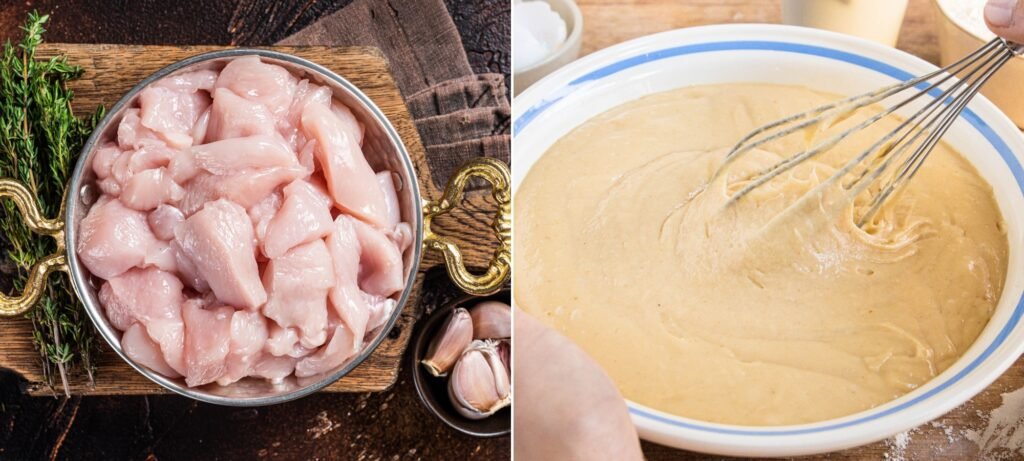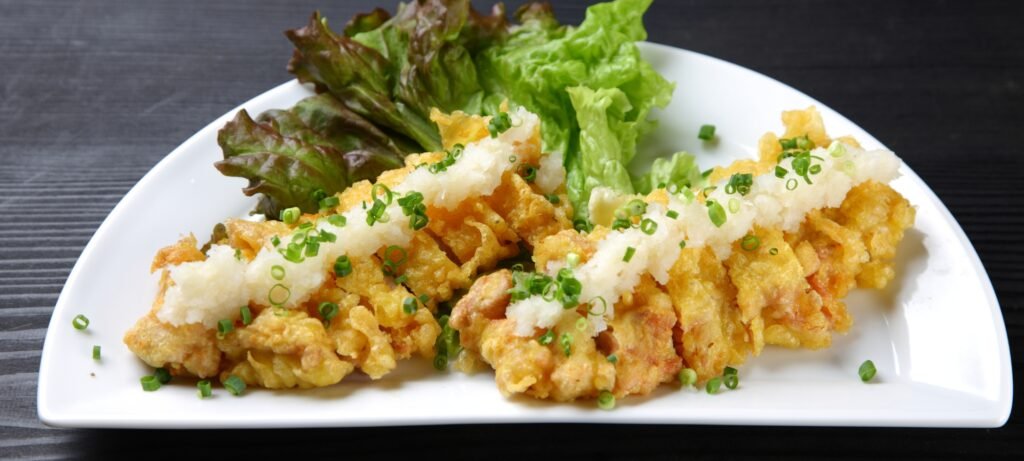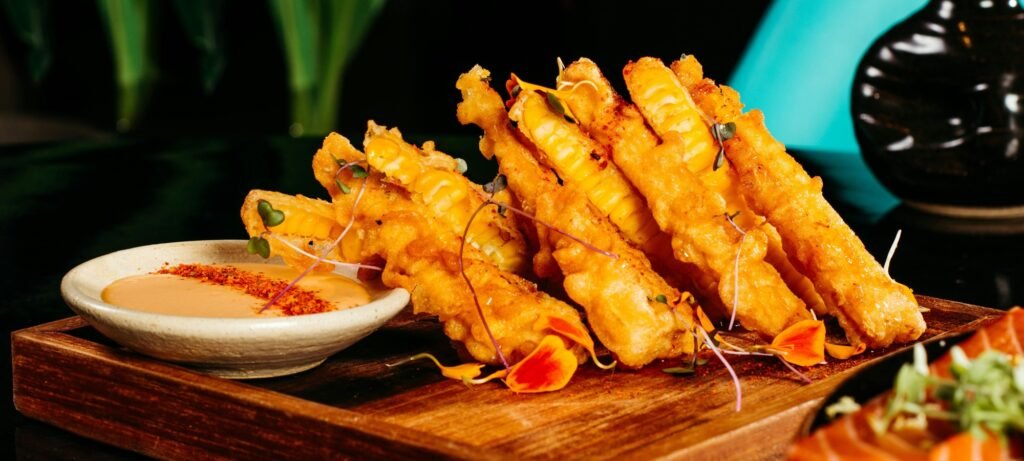Homemade chicken tempura represents one of Japanese cuisine’s most elegant and technical achievements, transforming simple chicken pieces into ethereally light, crispy morsels that showcase the perfect harmony between ingredient and technique. This beloved dish requires precision and understanding, but rewards the careful cook with restaurant-quality results that rival the finest Japanese establishments. The secret lies in creating an incredibly light, airy batter that forms a delicate shell around tender chicken, achieving the signature tempura texture that’s simultaneously crispy and cloud-like.
The Complete Homemade Chicken Tempura Recipe

Ingredients
For the Chicken:
- 1 pound boneless, skinless chicken thighs or breasts
- 2 tablespoons sake or dry white wine
- 1 tablespoon soy sauce
- 1 teaspoon fresh ginger, grated
- 1 clove garlic, minced
- 1/2 teaspoon salt
For the Tempura Batter:
- 1 cup ice-cold water
- 1 large egg yolk
- 1 cup all-purpose flour
- 2 tablespoons cornstarch
- 1/2 teaspoon salt
- Ice cubes for keeping batter cold
For Frying:
- 4-6 cups neutral oil (vegetable, canola, or peanut)
- Additional flour for dusting
For Dipping Sauce (Tentsuyu):
- 1/2 cup dashi stock
- 2 tablespoons soy sauce
- 2 tablespoons mirin
- 1 tablespoon rice vinegar
- 1 teaspoon fresh ginger, grated
Instructions
- Marinate the chicken: Cut chicken into bite-sized pieces, approximately 1-2 inches. Combine sake, soy sauce, grated ginger, garlic, and salt in a bowl. Add chicken pieces and marinate for 15-30 minutes at room temperature.
- Prepare the oil: Heat oil in a heavy-bottomed pot or deep fryer to 340°F (170°C). Maintain consistent temperature throughout cooking process using a reliable thermometer.
- Make the dipping sauce: Combine dashi, soy sauce, mirin, rice vinegar, and grated ginger in a small saucepan. Bring to a gentle simmer, then remove from heat and set aside to cool.
- Create the tempura batter: In a large bowl, lightly beat the egg yolk. Add ice-cold water and mix gently. In a separate bowl, whisk together flour, cornstarch, and salt. Add dry ingredients to the wet ingredients and mix very briefly with chopsticks or a fork, leaving the batter lumpy and slightly under-mixed. Lumps are essential for proper tempura texture.
- Prepare for frying: Remove chicken from marinade and pat dry thoroughly. Lightly dust each piece with flour, shaking off excess.
- Fry the tempura: Working in small batches, dip floured chicken pieces into the cold batter, allowing excess to drip off briefly. Carefully lower into hot oil and fry for 2-3 minutes until light golden and crispy. Remove with a slotted spoon and drain on wire racks or paper towels.
- Serve immediately: Arrange tempura on serving plates with small bowls of dipping sauce. Serve while hot and crispy for optimal texture and flavor.
Temperature Control and Oil Management

Maintaining precise oil temperature represents the most critical aspect of successful tempura preparation. Too low temperatures result in greasy, soggy coating as food absorbs excess oil. Too high temperatures burn the delicate batter before the chicken cooks through properly.
The ideal temperature of 340°F (170°C) creates immediate sizzling that forms the crispy shell while allowing gentle cooking of the interior. Monitor temperature constantly and adjust heat as needed, as adding cold battered items will temporarily lower oil temperature.
Use neutral oils with high smoke points like vegetable, canola, or peanut oil. These oils won’t impart competing flavors while handling the high temperatures required for proper tempura frying. The oil depth should be at least 3 inches to allow proper circulation and even cooking.
Seasonal Variations and Creative Applications
While traditionally served as appetizers or part of larger Japanese meals, chicken tempura adapts beautifully to various presentations. Serve over sushi rice with vegetables for tempura bowls, or incorporate into salads for textural contrast.
Creative seasonings in the marinade can reflect different flavor profiles while maintaining the essential tempura technique. Korean-inspired gochujang additions or Thai curry seasonings create fusion approaches that honor the cooking method while exploring new taste territories.
Homemade chicken tempura represents the perfect introduction to Japanese frying techniques, offering achievable results that showcase the elegance and precision that define this remarkable culinary tradition while providing deeply satisfying comfort food appeal.
- Homemade Veggie Nuggets Recipe - November 30, 2025
- Kaiser Rolls Recipe - November 29, 2025
- Fried Green Beans Recipe - November 28, 2025

